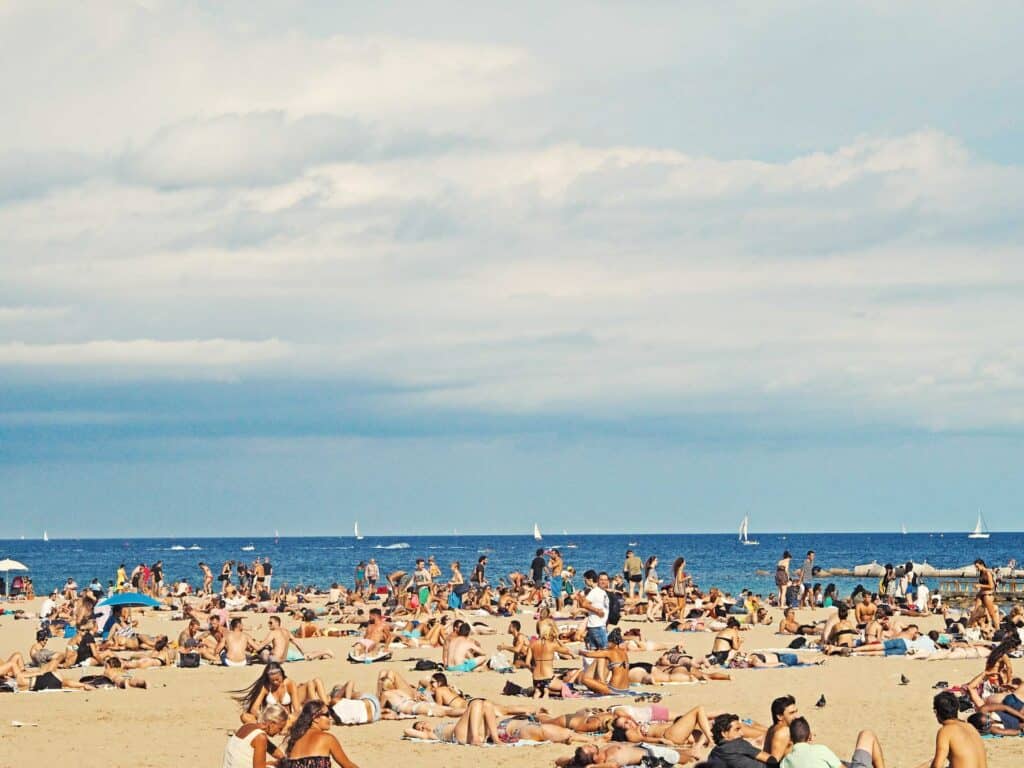Anyone who has spent a little too long at the beach or out in the garden will be familiar with sunburn. Although most people take active steps to protect their skin, it’s easy to forget to reapply your sunscreen after a dip in the pool. Sunburn can be painful, and regular exposure to UV rays can have harmful effects. Let’s talk about how you can look after your sunburn skin.
What is Sunburn?
With heatwaves becoming more and more common, it’s easy to get caught out without sun protection. Whether you’ve been sunbathing or been caught off guard, sunburn can be painful and uncomfortable.
Sunburn is an inflammatory reaction to UV radiation exposure. It damages the outermost layer of your skin. Sunburn is red, painful skin that’s hot to touch. Usually, it appears after a few hours of being exposed to UV light for too long, from either sunshine or artificial sources.
The Effects of Sunburn
While sometimes it feels unavoidable to prevent sunburn, especially if you’re caught off guard, repeated UV radiation exposure can result in harmful effects. Regular sunburn can increase the risk of skin damage like dark spots, wrinkled skin and rough spots. It can even increase your risk of skin cancer, such as melanoma.
You don’t necessarily need to have a sunburn to increase your risk of skin damage. When your skin is dark or tan, you might not see any redness, but that doesn’t mean that you’re not experiencing any damage from UV rays.
Side effects of sunburn include:
- Inflamed and angry-looking skin that’s red or pink and may be even harder to see on darker skin
- Itching and skin tightening
- Painful skin that’s hot to the touch
- In severe cases, you may have a headache, nausea, and tiredness
- Fluid-filled blisters in more serious cases
- Swelling

Sunburn Skin and Cancer
Sunburn can accelerate the ageing process and increase your risk of developing skin cancer. Too much UV damage from the sun (or sunbeds) can damage your DNA which can lead to skin cancer. According to Cancer Research UK, even getting sunburn just once every two years can triple your chances of developing melanoma skin cancer compared to those who don’t get burnt.
While skin cancer can occur in anyone, getting sunburnt skin can increase the chances of it. Although sunshine and vitamin D helps you to stay healthy, it’s important that you practice safe skin protection in the sun.
Sunburn Skin Treatment
Sunburn can feel painful and extremely uncomfortable. So, what’s good for sunburn skin?
To find some relief from the misery, here are some top tips for treating sunburn skin:
- Keep it cool and find a way to cool down the skin quickly by using a cold pack or taking a cold shower or bath.
- Use a gentle moisturiser while the skin is still damp.
- If safe to do so, take anti-inflammatory medicine, like ibuprofen, to ease the inflammation.
- Make sure you replenish your fluids as sunburn can draw fluid away from the skin.
- Seek medical help if you have severe blisters, fever, chills, or have any concerns.
Sunburn Skin Peeling: How to Reduce the Effects of Sunburn Skin
So, why does your skin peel after sunburn?
Sunburn is your body’s reaction when it’s overwhelmed by UV rays. The UV rays damage your skin cell’s DNA, so the dead cells shed away, and this is why your skin is peeling. Skin peeling after sunburn is part of the body’s natural healing process. Typically, when your skin is ready for exposure again, the peeling starts to ease. Peeling skin is basically a sign of damage.
Once you start to peel, there are a few things you can do to make it a little better. As tempting as it is, try to avoid peeling the skin yourself.
Here are some you can do to look after your peeling sunburn skin:
- Try using a soothing anti-inflammatory cream, such as aloe vera
- Be gentle on your skin and avoid rubbing it with a towel
- Protect your skin from further damage with sunscreen or clothing
- Once peeling, start to moisturise the skin and keep it hydrated
- Don’t exfoliate the skin to remove the peeling skin
- Seek shade and avoid being out in the sun during peak hours
You can expect skin peeling to last about 7 days for mild sunburn. If you feel fatigued, have a headache, or experience blistering over large areas of the body, speak to your doctor.
Sun Protection: Protecting Your Skin From Sunburn

The bottom line is that damage has been done to your skin, so now is the time to learn from your mistake and take the time to protect your skin. It’s essential that you figure out how to protect your skin in summer in a way that works for you.
Protecting your skin from sunburn can be a year-round task as the sun doesn’t need to be shining for it to affect your skin. Here are some tips to protect your skin from sunburn:
- Cover up with sun protection clothing
- Buy broad-spectrum sunscreen
- Be careful of windows
- Stay off the sunbeds
- Wear a hat for sun protection
Keeping your skin safe from UV rays is a crucial part of staying looking younger for longer and a key factor of any skincare routine. Stay safe this summer and all year round, and avoid the dreaded sunburn. But if you do get a sunburn, stick to these tips to help ease discomfort and start the healing process quickly.
Sunburn, even mild ones, can damage your skin. Over time, this can really take its toll on your skin and, not to mention, accelerate the ageing process. Sun exposure is the most common cause of wrinkling and skin damage. Protecting your skin from the sun all year round sets a strong foundation for slowing down the ageing process.
To create your skincare routine based on your skin type, book a consultation today at The Harley Clinic to discuss our medical-grade skincare kits from ZO Skin Health.













